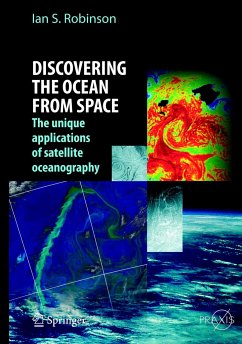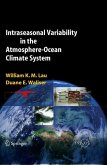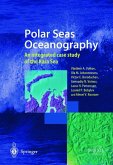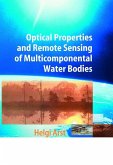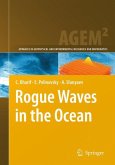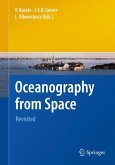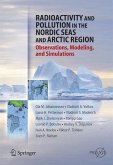This book offers a survey of the contribution of satellite data to the study of the ocean, focusing on the special insights that only satellite data can bring to oceanography. Topics range from ocean waves to ocean biology, spanning scales from basins to estuaries. Some chapters cover applications to pure research while others show how satellite data can be used operationally for tasks such as pollution monitoring or oil-spill detection.
Althoughthisisacompanion volume tomypreviousbook Measuring the Oceans from Space, published in 2004, it approaches the subject from a di?erent angle by providing abroad-ranging introductionandreviewoftheapplicationsofsatelliteremotesensing across the ?eld of oceanography. During the ?ve years it has taken to prepare this book what has motivated me is the attraction of the subject itself. In searching the scienti?c literature I have been excited by the interesting, new, and important elements of satellite oceanography being discovered around the world. I hope this book will help others to discover for themselves how sensors in space are giving us a new perspective of oceanographic phenomena and are increasingly enabling ocean science to serve the needs of modern civilization. Primarily I have written with postgraduate and senior undergraduate students in mind. Readers of my previous book will know that it aimed to present a systematic explanation of the diverse methods of satellite oceanography, the breadth of scienti?c knowledge, and the richness of innovative technology developed over 30 years since the ?rst dedicated ocean satellite was ?own in 1978. But satellite oceanography is too important a subject to treat just as a specialist topic for those with an interest in observational instrumentation and data-processing techniques. In recent years the availability of high-quality, processed satellite data has delivered remarkable and inspiring images of the ocean, which can almost tell their own stories.
Althoughthisisacompanion volume tomypreviousbook Measuring the Oceans from Space, published in 2004, it approaches the subject from a di?erent angle by providing abroad-ranging introductionandreviewoftheapplicationsofsatelliteremotesensing across the ?eld of oceanography. During the ?ve years it has taken to prepare this book what has motivated me is the attraction of the subject itself. In searching the scienti?c literature I have been excited by the interesting, new, and important elements of satellite oceanography being discovered around the world. I hope this book will help others to discover for themselves how sensors in space are giving us a new perspective of oceanographic phenomena and are increasingly enabling ocean science to serve the needs of modern civilization. Primarily I have written with postgraduate and senior undergraduate students in mind. Readers of my previous book will know that it aimed to present a systematic explanation of the diverse methods of satellite oceanography, the breadth of scienti?c knowledge, and the richness of innovative technology developed over 30 years since the ?rst dedicated ocean satellite was ?own in 1978. But satellite oceanography is too important a subject to treat just as a specialist topic for those with an interest in observational instrumentation and data-processing techniques. In recent years the availability of high-quality, processed satellite data has delivered remarkable and inspiring images of the ocean, which can almost tell their own stories.

